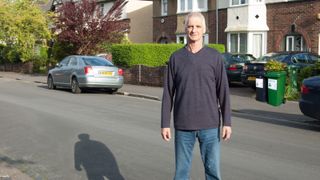People are pretty bad at spotting Photoshopped images
More than a third of fake images go undetected

Can you tell when an image has been digitally manipulated? Only about two-thirds of the time do people manage it, according to new research from psychologists at the University of Warwick.
A team led by Sophie Nightingale asked 659 people aged 13 to 70 to view a set of images of ordinary scenes like the one featured above - people standing in streets, or next to canals, that sort of thing. Some of them were digitally altered in subtle, plausible ways - airbrushed slightly, or with items added or subtracted. Others were altered in less plausible ways - having shadows manipulated, for example.
The participants were then asked: "do you think this photograph has been digitally altered?" Only about 58 percent of the original, unaltered images were correctly identified (not far above random chance), and 65 percent of those that had been manipulated.
The researchers also asked the volunteers to point out areas that they think might have been manipulated, even if they thought that it hadn't been altered. Here, about 56 percent of the manipulations were correctly located.
The real and the fake
"When people look at newspapers or magazines, or go on the internet, they're going to be exposed to fake images, yet our research has shown that people are quite unlikely to distinguish between the real and the fake," said Nightingale.
"So the challenge now is to try and find ways to help people improve at this task. For instance, fake images often contain tell-tale signs that they have been manipulated, and we're conducting new research to see whether people can make use of these signs to help identify forgeries."
The full details of the study were published in the journal Cognitive Research: Principles and Implications.
Get daily insight, inspiration and deals in your inbox
Get the hottest deals available in your inbox plus news, reviews, opinion, analysis and more from the TechRadar team.
Most Popular


